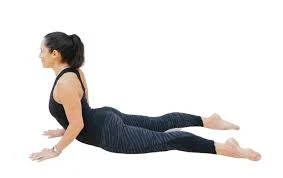Embark on Transformation: Exploring Yoga Asanas and Their Empowering Benefits
Dive Deep into Yoga Asanas: Main
Poses and Their Transformative Benefits 
Yoga, an
ancient practice that harmonizes the mind, body, and spirit, encompasses a
myriad of poses known as asanas. These poses, when practiced regularly, offer a
spectrum of physical, mental, and emotional benefits. Let's explore some key
yoga asanas, unraveling their techniques and delving into the profound
advantages they bring to those on the yogic journey.
Mountain Pose (Tadasana)
Benefits: Strengthens thighs, knees, and
ankles. Improves posture and balance. Promotes a sense of grounding and
stability.
Downward-Facing Dog (Adho Mukha
Svanasana)
Benefits:Stretches and strengthens the entire
body. Relieves tension in the spine. Enhances circulation and energy flow.
Warrior II (Virabhadrasana II)
Technique: Step your feet wide apart, extend arms parallel to the floor, and gaze over the front hand.
Benefits: Strengthens legs, arms, and core.
Opens the hips and chest. Builds concentration and stamina.
Technique: Shift weight onto one leg, place the sole of the other foot on the inner thigh or calf, and bring hands to prayer position.
Benefits: Improves balance and focus.
Strengthens legs and ankles. Enhances hip flexibility.
Technique: Kneel on the mat, sit back on your heels, and extend arms forward, lowering your torso toward the ground.
Benefits: Relieves back and neck strain. Calms
the mind and reduces stress. Stretches the spine and hips.
Technique: Lie on your stomach, place hands beneath shoulders, and lift your chest while keeping the pelvis on the floor.
Benefits: Strengthens the spine and core.
Opens the chest and lungs. Alleviates stiffness in the lower back.
Technique: Lie on your back, bend your knees, and lift your hips toward the ceiling, clasping your hands beneath you.
Benefits: Strengthens the legs, glutes, and
lower back. Stretches the spine and chest. Calms the nervous system.
Technique: Sit with legs crossed, placing each foot on the opposite thigh, hands resting on the knees.
Benefits: Enhances posture and spine
alignment. Promotes inner calm and focus. Stimulates digestion.
Technique: Lie on your back, legs extended, arms by your sides, palms facing up. Close your eyes and relax.
Benefits: Promotes deep relaxation. Reduces
stress and anxiety. Restores energy and calms the nervous system.
Conclusion
Yoga asanas serve as gateways to holistic well-being, offering a transformative journey for practitioners of all levels. Incorporating these main poses into your practice fosters physical strength, mental clarity, and emotional balance. Whether you're a seasoned yogi or just starting, the profound benefits of these asanas await, inviting you to embark on a journey of self-discovery and vitality.









Comments
Post a Comment